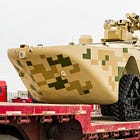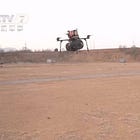Advanced Chinese Anti-Tank Missiles Reshape Ground Combat Dynamics In Taiwan Invasion Scenario
🇨🇳 🇹🇼
If China had attempted to undertake an invasion of Taiwan circa 2010, the People’s Liberation Army (PLA) infantry that landed on the island of Taiwan in amphibious landings and air assaults would have had limited anti-armour capabilities. With the increasingly widespread deployment of the HJ-12 anti-tank guided missile, however, this is no longer the case, and even small PLA infantry units can readily defend against attacks by Taiwanese mechanized and motorized platoons, companies, and battalions.
The HJ-12 is the Chinese analogue to the American FGM-148 Javelin anti-tank missile. These are fire-and-forget lock-on-before-launch line-of-sight anti-tank missiles with top-attack modes. The high performance of such anti-tank missiles is enabled by, among other things, a fairly expensive imaging infrared seeker, which makes the HJ-12 one of the more expensive anti-tank missiles in existence. Anti-tank missiles such as the FGM-148 and HJ-12, which can be deployed down to the squad/fireteam level, offer infantry a highly credible means of knocking out, if not destroying, most armoured vehicles in existence with a single munition. This includes all of Taiwan’s armoured vehicles and, in the right circumstances, including Taiwan’s latest American-built M1 tanks. When equipped with the likes of the HJ-12, otherwise lightly equipped PLA air assault infantry can independently defend against attacks by Taiwanese mechanized and motorized units against which PLA light infantry would otherwise be at a very significant disadvantage in terms of firepower.
While the HJ-12 is an impressive system that is likely to remain in frontline use with the PLA for many years to come, it is neither the only approach to a highly effective anti-tank missile nor is it necessarily the best approach for use in a Taiwan invasion scenario. The primary alternative approach is exemplified by the Israeli Spike family of anti-tank missiles as well as its Iranian, French, Turkish, and even North Korean emulations. As with the HJ-12 and FGM-148 Javelin, the Spike family also relies on imaging infrared seekers to provide a fire-and-forget capability when used in line-of-sight direct fire mode, but most members of the Israeli Spike family also incorporate a spool of fiber-optic cable. This facilitates a non-line-of-sight indirect fire mode in which the human operator does not require a line-of-sight on the intended target. This allows the human operator to launch the missile while remaining under cover and to fire over terrain, whether hills and trees or buildings, to attack targets situated 5-10 kilometers away. It is worth noting that Taiwan’s quite narrow western coastal plain typically extends over a depth of just 25-35 kilometers.
Given the widespread deployment of the Chinese HJ-10, the PLA is no stranger to this particular class of anti-tank missiles. The HJ-10 is, however, a larger, heavier, and longer-range vehicle-launched anti-tank missile analogous to some of the largest members of the Israeli Spike family, and the PLA is not known to operate a human-portable non-line-of-sight anti-tank missile in the vein of the smaller and lighter members of the Israeli Spike. Should China develop and deploy such an anti-tank missile, which is, in a world of limited resources, best used to complement, not replace, the HJ-12, PLA infantry that land on the island of Taiwan will be able to undertake short time-to-target non-line-of-sight indirect fire attacks on Taiwanese armoured vehicles and other battlefield targets, while PLA infantry equipped with the HJ-10 in the forward-most positions would be able to independently knock out, if not destroy, Taiwanese armoured vehicles that close in on their positions.
The HJ-10 is emblematic of one of the many changes to the PLA’s combat capabilities that are likely to strongly affect how a Chinese invasion of Taiwan will play out, but which nevertheless tend to receive little attention. How adeptly Chinese infantry are trained, equipped, and employed in a Taiwan invasion scenario is increasingly one of the more important questions for analysis. While the scope for an “unmanned” Chinese invasion of Taiwan is fast-increasing, so is the plausibility of parallel fairly small-scale Chinese air assaults along Taiwan’s coast that put on the ground PLA special operations forces and elite light infantry to direct air, missile, and drone strikes against Taiwanese targets in their vicinity. If the PLA is to pull off such fairly small-scale air assaults, PLA infantry units will have to be generously equipped with and assigned high-performance armaments in the vein of the HJ-10 anti-tank missile.
Some relevant posts:








